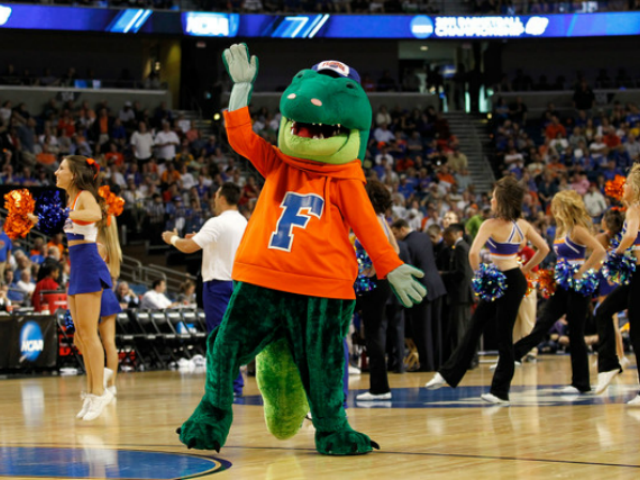The National Wildlife Federation is taking advantage of the March Madness college basketball tournaments, to push its climate change agenda and its threat to the animals used by teams as mascots.
“Whether a fierce wildcat, a chomping gator, or a fighting duck – mascots are the face of every college athletic program,” the report states. “These symbols of school spirit get the home crowds cheering and rally athletes, students, alumni, and fans, not just on campus but across the community and around the country. They foster a sense of team pride – and great competition.
“Unfortunately, many of the plants and animals that inspired our favorite teams’ names and mascots are facing a losing streak,” the 2014 report recycled by Yale Climate Connections last week, states. “From the Colorado State University Rams to the University of Maryland Terrapins, climate change is quickly becoming the toughest opponent to the long-term survival of wildlife.”
The report suggests ways to “help our mascots make a comeback,” including imposing laws limiting “carbon pollution” and other air pollutants, fund “renewable energy sources to replace our dangerous dependence on dirty fossil fuels,” and practicing “climate-smart conservation.
“When it comes to fighting climate change, we are all on the same team!” the report states while demonizing power plants and stating that climate change threatens “our mascots, our wildlife, and our communities.”
The report, titled “Mascot Madness: How Climate Change is Hurting School Spirit,” goes on to explain how specific mascots are threatened:
• The University of Memphis, University of Missouri, Louisiana State University, Clemson University, Auburn University and Occidental College have a tiger as a mascot — “Even though lions and tigers are at the top of the food chain, some populations are playing defense to a new predator: climate change. A large coastal mangrove forest in Bangladesh sustains several hundred tigers. Already, rising sea levels are taking a bite out of this tiger habitat.”
• “Sturdy and powerful, bighorn sheep rams are a symbol of strength and perseverance. It is not a surprise that schools like Colorado State University and Virginia Commonwealth University have made rams their mascot. While some bighorn sheep populations have recovered, climate change is a new and growing threat. As climate change continues to worsen in the decades ahead, bighorn sheep rams are expected to be down a few players.”
- “The black bear, which is the mascot for Baylor University and other schools, is a great tree climber, unlike grizzly bears. Although black bears have a diverse diet and range widely across North America, they are not immune to climate change. In the West, intense drought, one of the many consequences of climate change, has already left bears desperately hungry.”
- The bison, also known as the American buffalo, is the mighty mascot for schools like the University of Colorado, North Dakota State, and Bucknell University. Formidable in size, bison can weigh up to two tons, and once ranged widely across the country with dominating power. This iconic species of the American West was nearly wiped out by uncontrolled hunting and almost driven off its home court.”
- “Much like University of Michigan athletes, the wolverine is tenacious, aggressive, and not afraid to box out much larger opponents. The cold-weather wolverine is rapidly vanishing from continental America as climate change continues to warm the planet. The deep snowpack, so essential for denning and raising their young, is harder and harder to find.”
- “Ducks are a favorite species for sportsmen and wildlife watchers. A variety of duck species is found across America – such as the mallard and blue-winged teal. With their prominent bills and distinctive calls, there is no mistaking a quacking duck – or a “fighting duck” like Puddles, the University of Oregon mascot. But ducks are crying foul as climate change hits their habitat.”
The report doesn’t limit the climate change agenda to animal mascots, however. It also uses college basketball team mascots as proof of increasing “extreme weather.”
“Hurricanes, heat waves, fires, droughts, and floods are plaguing our country as climate change brings on more intense weather events. It is no surprise that schools name their teams and mascots to represent these strong and destructive events. The University of Miami Hurricanes, the Iowa State Cyclones, the Kent State University (lightning) Flashes, and the University of Illinois-Chicago Flames all boast mascots that intimidate the competition with a show of devastating force,” the report states.

COMMENTS
Please let us know if you're having issues with commenting.